Research on Simulation Network Test Scheme for 5G Vehicle Communication Module

Research on Simulation Network Test Scheme for 5G Vehicle Communication Module
At present, the global 5G large-scale commercial deployment has entered the "fast lane". Against the backdrop of increasingly mature network conditions, the Internet of Vehicles industry has developed rapidly and has begun to change the driving experience and daily life of ordinary people. A complete Internet of Vehicles service requires the coordination of people, vehicles, and roads. Based on infrastructure such as cellular mobile communications and V2X, it cooperates with big data and artificial intelligence networks to provide new business experiences including autonomous driving, advanced assisted driving, and smart transportation. At this stage, the V2X-related roadside facilities industry is still in the technology demonstration stage. In order to create solutions that can directly improve the driving experience, such as primary assisted driving, smart cockpit, and in-vehicle infotainment, car companies are paying more and more attention to in-vehicle communication modules, especially 5G communication modules. Group communication quality. At the same time, after years of collaborative development and optimization with mobile phones and industry terminals, the 5G commercial network has mature conditions and played the role of the first-stage infrastructure of the Internet of Vehicles industry.
As the automobile manufacturing industry pays more and more attention to the performance of in-vehicle communication systems in 5G networks, auto companies have also begun to build their own simulation network laboratories for more detailed 5G in-vehicle communication module testing. This article introduces the technical challenges and basic solutions for simulated network testing of 5G multi-mode communication modules, covering functional testing, performance testing, and stability testing, etc., and shares practical experience.
Development status of 5G multimode simulation network laboratory testing
Simulated network test refers to the use of commercial equipment in the laboratory or small-scale controllable field area to build an end-to-end test environment with the same structure as the commercial network to verify the function, performance and compatibility of the tested product in the actual network. In 2G, 3G and 4G product testing, the simulated network test is generally used as the last "threshold" before entering the field test to avoid failures entering the field test stage. At the 5G stage, major terminal, chip, and module manufacturers began to build large-scale simulation network test environments by themselves, moving the simulation network test to the R&D stage, and its importance has also increased significantly. The main reasons are as follows.
One is the "four generations under one roof" of commercial networks. The test not only needs to solve the 5G single-mode problem, but also needs to solve the interoperability problem between 5G and 4G, 3G and even 2G. The difficulty of testing increases, the number of test cases increases, and the test cycle is bound to be greatly lengthened.
Second, in order to obtain the best user experience, basic functions, compatibility, and interoperability tests have been unable to meet the ultimate pursuit of terminal manufacturers for communication performance. The analog network is used as the signal source, and the air interface channel model is used to complete the baseband chip and RF front-end. The testing and optimization of antennas and antennas have become an important research and development link for mainstream terminal manufacturers.
The third is that the stability of equipment continues to improve. The traditional mode of "returning to the laboratory to solve problems after field testing" is already very inefficient. Enterprises use self-built simulation network laboratories to introduce a large number of stability and automated testing solutions. Expose possible problems in the laboratory in advance before the product is commercialized.
Based on the above purpose, in the past three years, the test scheme based on the simulated network has been widely used in the test of the terminal research and development stage, and gradually evolved from the basic functional and compatibility test to the performance and stability test. The following types of typical practices have been formed.
(1) Function and interconnection test
As the most traditional simulated network test type, function and interconnection test is to verify the functions and interconnection capabilities of various services in an environment closest to the operator's real network before the product is put into commercial use, and connect various networks through services. The inter-unit signaling process performs final verification of possible problems at the communication protocol level. This type of test has lower requirements on the configuration of the simulated network environment. For the key commercial market, configure the corresponding mode, manufacturer and frequency band of the cell, access the service platform, and the test engineer manually or automatically operates the terminal under test to complete the business process. Cooperate with signaling analysis software or drive test software to locate and analyze faults.
(2) Network compatibility test
In the initial stage of the development of communication chips and terminals, the protocol conformance test is mainly completed by comprehensive testers. The main reason is that various manufacturers have inconsistent understanding of the agreement. In order to ensure that their own products are compatible with all system equipment, terminal manufacturers need to complete compatibility tests with all base station and core network equipment manufacturers. In addition, the actual commercial core network and base station configuration parameters are huge, and the specific configurations in the operator's network vary greatly. Field problems caused by configuration differences need to be reproduced and solved in the laboratory, which also belongs to the category of compatibility testing.
(3) Wireless performance optimization
After the functions and compatibility are more mature, the terminal enters the stage of differentiated competition in performance. Terminal performance is not only limited by the baseband algorithm, but antenna design and optimization also play a key role. Therefore, it is necessary to carry out targeted baseband and antenna optimization under certain air interface channel conditions. Compared with network analog instruments such as comprehensive testing instruments, the analog network system uses the same equipment as the operator's commercial network, and its capacity and processing capacity are also the same as the operator's commercial network, and there is no limitation of uplink and downlink network capabilities. Only by using the simulated network as the signal source, in conjunction with the channel simulator and the air interface channel model, can a performance test system closest to the real commercial environment be constructed. The mainstream terminal manufacturers in the industry have started to establish their own typical wireless air interface channel scene library as a precise performance optimization method for the whole series of models.
(4) Stability test
The terminal stability test is developed from the terminal MTBF (Mean Time Between Failure) test. In order to ensure the stability and reliability of the long-term operation of the built-in software of the terminal, a large-capacity, high-load, and long-term test of the software system is carried out under the premise of ensuring a smooth network to find system failures. Considering that communication quality itself is a key factor affecting terminal service performance, terminal manufacturers have introduced cellular mobile communication networks into the MTBF test, using factors such as signal strength, signal change, switching, reconfiguration, and interference as test conditions, greatly improving terminal performance. Stability testing completeness. Some terminal manufacturers have introduced network damage factors into the MTBF test conditions. After completion, all test conditions of the live network can be simulated to form a complete simulated network stability test system, as shown in Figure 1. After years of exploration and application, the simulation network test solution for 5G multi-mode smartphones has become very mature. The test solution continues to help companies improve product quality and optimize product performance. At the same time, it realizes continuous exploration and innovation on the basis of simulated networks, laying a solid foundation for the introduction of simulated network tests for in-vehicle communications.
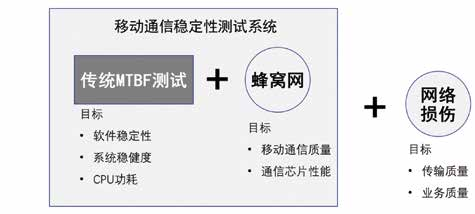
Fig.1 Scheme architecture of simulation network stability test system
Requirements and Challenges of 5G Vehicle Communication Module Testing
In the past two years, more and more car companies have realized the importance of the communication system to the whole vehicle, so they have increased the team building and resource investment in the research and development and testing of the communication system. Some car companies have already developed their own vehicle communication modules. It is foreseeable that the industry integration between mobile communication and automobile manufacturing will become closer and closer. The test of in-vehicle communication modules can learn from a large number of mature test solutions of traditional terminals. For typical in-vehicle scenarios, it is necessary to develop a test system or upgrade the existing test methods. Table 1 shows the traditional terminals and in-vehicle communication modules. Comparison of test requirements.
For the test direction related to the analog network, the requirements and challenges of the 5G vehicle communication module mainly include the following three aspects.
One is multi-type business concurrency. The in-vehicle communication module needs to complete multiple types of services such as vehicle operation data, assisted driving data, infotainment data, etc., and has higher requirements for communication performance. In the process of designing the simulation network test system, various corresponding business models need to be matched, and the construction scale on the core network and service platform side will be larger than that of smartphone testing.
The second is the differentiated design of the antenna module. Vehicle communication antennas are constantly being upgraded. Traditional shark fin antennas, newly applied front-panel antennas, and future vehicle-mounted antenna systems will all have different impacts on communication performance. The size of the antenna directly affects the construction planning of the shielding room of the analog network test line. The construction of the new test system needs to consider the requirements of the subsequent vehicle antenna scheme in advance.
Table 1 Comparison of test requirements between traditional terminals and in-vehicle communication modules
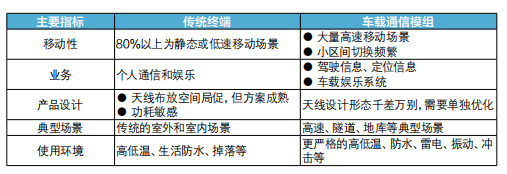
The third is a large number of high-speed mobile scenes and complex special scene requirements. A large number of high-speed mobile scenarios mainly bring the challenges of the Doppler effect and frequent inter-cell handovers, so that the simulated network test solution cannot only consider functional tests from the early stage, and needs to introduce a performance test module integrated with a channel simulator. At the same time, in the face of complex special scenarios such as tunnels, basements, and viaducts and the impact of harsh weather environments, the difference between the vehicle communication test scheme and the traditional test scheme is mainly the difference in air interface multipath propagation and small-scale fading, which relies more on the air interface channel model the introduction of.
Design of simulation network test scheme for 5G vehicle communication module
The overall design of the simulated network test scheme for 5G vehicle communication modules needs to consider the requirements of functional testing, performance testing and stability testing. For specific application scenarios and wireless performance requirements, both costs and benefits are considered to achieve a relatively complete basic platform for simulated networks and can Expanded various test systems.
Analog Network Basic Platform Solution
Facing the increasingly globalized automobile market, both domestic and foreign automobile companies are facing the demand of "going overseas". The simulation network construction should consider the simulation of global operator networks, and the platform design must consider the requirements of existing mobile communication standards and major global frequency bands.
(1) Core network
Carrier-level commercial core network construction and maintenance costs are extremely high, and 2G, 3G, 4G and 5G core networks need to be fully configured, and there are 4 mainstream core network equipment providers in the world, all of which are mandatory for the construction of analog network platforms . Purchasing 4 sets of carrier-grade core networks is extremely expensive for enterprises to build their own simulation networks. The current optimal solution is to cooperate with existing multi-manufacturer large-scale core network laboratories to access them remotely, and at the same time set up the core network locally The user plane network element equipment not only guarantees the service performance of the user plane, but also guarantees the security of test data, which greatly saves investment.
(2) Access network
Base station procurement is the main investment in the construction of the analog network platform. The standard and frequency band should be determined for key global markets, and equipment from the main macro base station suppliers of local operators should be selected. There are two types of 5G base stations, AAU and RRU. If you choose the AAU station type, you need to configure the corresponding tooling adapter board to lead the RF signal out in a conductive manner, which is convenient for the subsequent construction of various test systems.
(3) RF signal control
The analog network has a large number of base stations and covers multiple standards. To achieve signal strength control, inter-cell switching, and inter-mode switching, a more efficient way is to configure the RF signal to the required test line through software control. This requires the introduction of a program-controlled attenuation system. The RF signal passes through the program-controlled attenuator from the antenna port of the base station, passes through multi-hop RF cables and connectors, and finally reaches the antenna port of the communication module under test or the shielded room. The program-controlled attenuation system is shown in the figure 2.
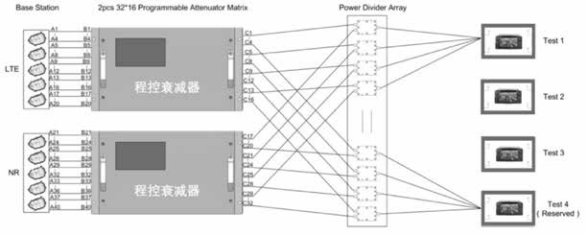
Figure 2 Schematic diagram of the program-controlled attenuation system
Test System Based on Simulated Network
The simulation network test system based on the 5G multi-mode vehicle communication module is mainly divided into three categories, and various targeted test capabilities at this stage can be summarized in these three categories.
(1) Functional test system
It is mainly to complete basic functions and related tests of interface protocols, including NVIOT tests of L1/L2/L3 protocols, field problem recurrence tests, and basic business tests. The test system can be conducted or OTA. The test engineer presets the core network and base station configuration according to the test case, controls the signal strength, completes the terminal dial test and records and analyzes the test results. The typical test cases of the functional test system are shown in Table 2.
Table 2 Typical test cases of the functional test system

(2) Performance test system
To complete air interface performance-related tests, a channel simulator needs to be configured in the test environment, using 3GPP standard channel models (such as EVA, ETU, EPA, SCME, IMT-A, 38.901 CDL, etc.) or real channel models recorded in the field (such as dense Urban areas, viaducts, tunnels, basements, etc.) for performance optimization and problem location. The performance test system built by conduction is mainly for performance optimization and evaluation of communication chip algorithms; the performance test system built by OTA can complete the performance optimization test of the whole machine and antenna, and the test environment needs to introduce a multi-probe microwave anechoic chamber. The performance test system architecture is shown in Figure 3.
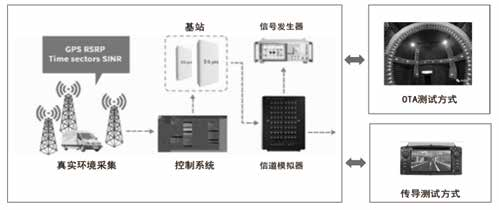
Figure 3 Performance test system architecture
(3) Stability test system
The stability test system needs to simulate the long-term baking test of various user behaviors of the vehicle communication module under different network configurations and conditions. The test system mainly requires three aspects of automatic control: one is the automatic dialing test of the tested vehicle communication module, which can realize the control of simulated user behavior through the module manufacturer's self-developed or third-party APP; the other is the automatic control of the radio frequency signal , by designing and compiling scripts to control the program-controlled attenuation matrix system to realize the control of cell signal strength, inter-cell switching, inter-system switching, interference signal switching, etc.; the third is the automatic configuration of the base station, and the control of the cell network is realized through the control interface of the base station network management and configuration modification of parameters. The above three aspects are collaboratively controlled by the unified management software, and can automatically compare and analyze the logs on the module side and the base station side, and finally realize the complete stability testing capability. The architecture of the stability test system is shown in Figure 4.
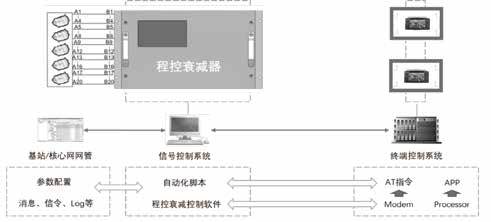
Figure 4 Stability test system architecture
Principles of Test Line Planning and Design
(1) Demand Priority Principle
When constructing the simulated network test system, car companies need to consider the current and future global shipment destinations in advance, and reserve base station equipment resource pools based on the base station types and frequency bands corresponding to local operators and system manufacturers' equipment configurations. Enough room for future expansion. According to the consideration of its own products and test volume, reasonably plan and match the number of functional test lines, performance test lines and stability test lines. Among them, the stability test line needs to consider the method and quantity of parallel testing, and choose to build multiple tests The line is also a large test chamber that can accommodate more DUTs.
(2) The principle of minimum road loss
The location of the base station resource pool should be designed to be close to each test line to meet the minimum path loss requirements. The order of sensitivity to signal path loss from high to low is: performance test system, stability test system and function test system. The performance test system must ensure the peak value when the air interface channel model is not loaded, so it generally needs to monopolize the cell resources. When there are many performance test requirements, special allocation of base station resources can be considered.
conclusion
The simulation network test of the vehicle communication module is still in its infancy, and the 5G multi-mode cellular mobile communication system is currently used as the main test content, and the accumulation of corresponding scenarios, models, and scripts has just begun. With the continuous development and improvement of the vehicle communication system, the simulated network test for the vehicle communication module in the future will be towards the combination of cellular mobile communication and short-distance communication, the combination of cellular mobile communication and V2X, and the combination of vehicle module testing and vehicle testing. Carry out technological evolution and make greater contributions to improving the communication quality inside and outside the car and the driving experience of the majority of car owners.